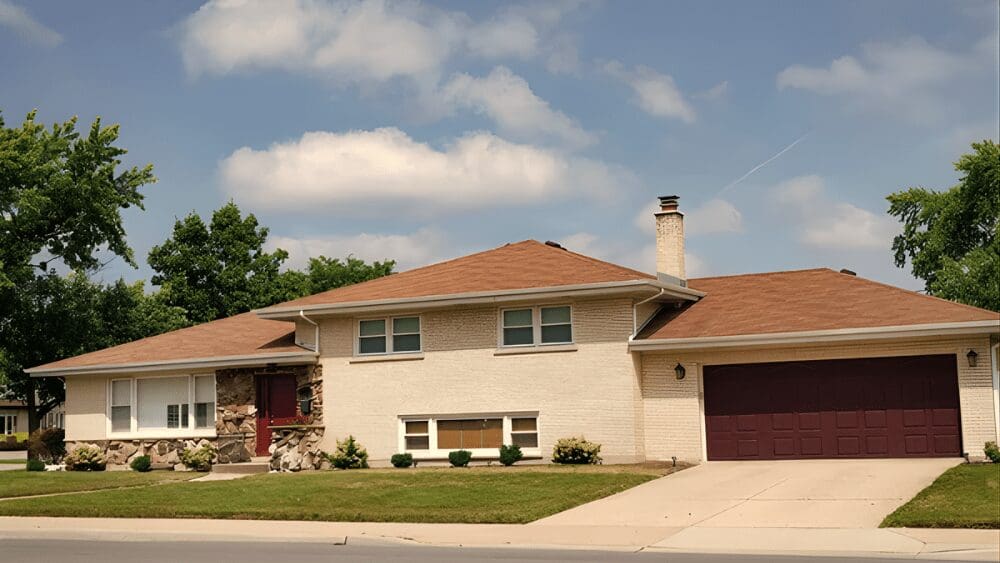
DISCLAIMER: As a friendly reminder, this blog post is meant to be used for educational purposes only, not legal advice. If you need assistance navigating the legalities of what to include on a home seller disclosure form in California, HomeLight always encourages you to reach out to your own advisor. California has complex disclosure requirements for home sellers. After searching the internet, you may have found seller disclosure forms for California, but nothing that explains what it means. That can be confusing and frustrating. After seeing the mammoth California disclosure form, you may wonder whether you need to spend a lot of money on things that appear on the disclosure form. Does that sound like you? If so, you’re in the right place; we’re here to explain how seller disclosure forms work in California and make it easier for you to sell your California home. Generally, a seller’s disclosure is a standard form containing material defects and features of the property for sale; it’s one of the many documents that you need to collect and complete before selling your home. A material defect is a specific problem with a home’s system or other components that can adversely impact the property’s value or pose a safety risk to people. These defects are not always apparent or visible. In most states, if there are material defects on the property and the seller is aware, there is a duty to disclose them to potential buyers. Some states have laws that require the seller to complete a disclosure statement or notice, and others do not. California Civil Code §1102 requires a seller’s disclosure. This requirement to disclose applies to real estate property of 1 to 4 dwelling units transferred by a sale. The form is a standardized checklist called the Transfer Disclosure Statement, or TDS. The seller’s disclosure form is also found in California’s handbook to help sellers understand their disclosure requirements and responsibilities. The California disclosure form gives buyers the information they need to help them decide on purchasing a house. “For buyers, it’s their opportunity to find out things about the property that they may not know just from a visual inspection,” explains Karen Anderson, a top real estate agent from Los Angeles who’s been helping sellers navigate disclosures for 25 years. A California disclosure form is probably not going to ruin a sale. It helps you sell your home because it shows the buyer and their agent: A California disclosure for sellers means that you have explained the material defects on the property. The form ensures that you have been transparent to the buyers and other stakeholders involved and that they are aware of the material defects and features of the property. Disclosure of material defects on the property may help you avoid a lawsuit if there are issues in the future. In other words, a seller disclosure form can be helpful if you get sued later down the road. Here again, a California disclosure form shows your buyer that you take the transaction seriously and are honest and transparent. Before we review the details of California’s Transfer Disclosure Statement form, let’s establish what it does not do: We’ll cover some limits to your duty to disclose, or exemptions, in detail later in the article. The seller must provide the disclosure statement before transferring the title. The timing of the seller disclosure enables a buyer to be protected by the termination clause. The termination clause provides the buyer the right to terminate the deal after receiving the California disclosure form. Typically, the buyer has three to five days to terminate the deal after receiving the seller’s disclosure. The TDS requires you to disclose a litany of items. The complexity of the document is meant to protect both the seller and the buyer. “It’s really designed to jog your memory about pretty much any situation that could come up, or could have occurred, so that you don’t forget,” Anderson says. Sellers in California are required to report on the presence and operation of home systems that can impact the safety of residents living on the property. The form specifically asks the seller to disclose the presence of the following: Following this list of home systems, the seller will be asked to declare — to the best of your knowledge — if any of the above items are not in operating condition. If yes, you will need to describe what’s not working. When you fill in the TDS, initial the page’s bottom and indicate whether the items are owned or leased. “The buyer needs to know their obligation once they assume ownership,” Anderson says. Sellers in California are required to report on the home’s structural integrity because it can impact the safety of residents living on the property. The form specifically asks the seller to disclose the presence of significant defects or malfunctions in the following: Sellers in California are required to report on hazardous materials or conditions in the home because it can impact the safety of residents living on the property. The form specifically asks the seller to disclose the presence of hazardous materials or conditions, including: Sellers in California must report on legal, zoning, annexations, or use compliance in the home because it can impact the enjoyment of residents living on the property. The form specifically asks the seller to disclose the presence of hazardous materials or conditions, including: Sellers in California must report on flood risks or water damage in the home because it can impact the enjoyment and safety of residents living on the property. The form specifically asks the seller to disclose the presence of hazardous materials or conditions, including: California law requires that you disclose the death of someone in the home within the last three years. You don’t have to disclose a death in your California home if the death occurred more than three years before the sale of the house. You also don’t have to disclose if a prior occupant had Acquired Immune Deficiency Syndrome. “Most buyers find that comforting in a way that the person loved their home so that they wanted to pass away in it,” Anderson says. When it comes to death in the home, it might be better to disclose it when asked. “I had a case a few years ago where two neighbors came to me during the open house and asked me if I knew about the murder in the home. I had to disclose that as a material fact,’ Anderson says, “two strangers told me at an open house; they’re going to tell a new buyer too.” For readers who are interested, see our story: How to Find Out if Someone Died in Your House California sellers must also disclose the following information: Realtor associations have created websites or pages where sellers can review or search mandatory disclosure rules and documents. The California Association of Realtors created a comprehensive sales disclosure chart in California. There are some disclosure exceptions when selling a home in California. For instance, California sellers are exempt from some disclosures if the sale is: If you accidentally left something out, you’re probably okay. “If the buyer came to you after the sale, they would have to prove that you left something out on purpose. You’re not likely to forget something important because of the questionnaire,” Anderson says. If something breaks, you can write an amended or additional disclosure. “You can do an addendum to your disclosure and do an additional disclosure if you remember something before the deal closes,” Anderson says. “That extends the approval period for the disclosure and gives the buyer the right to back out if they don’t like the new information.” Although it might seem like filling out the TDS for your California home is complicated, trust your real estate agent or real estate attorney to help you navigate the required paperwork and anything else that might pop up during the transaction. HomeLight’s Agent Match can connect you with top-performing agents in California who have the local experience and market knowledge to successfully guide you through every step of the home-selling or buying journey — from disclosures to closing. Put a top professional in your corner. Header Image Source: (Mattia Bericchia / Unsplash)What is a seller’s disclosure?
Is a seller’s disclosure required in California?
What does a California disclosure form mean for buyers?
What does a California disclosure form mean for sellers?
What does a seller’s disclosure not do?
When is the California disclosure form required to be submitted?
It’s really designed to jog your memory about pretty much any situation that could come up, or could have occurred, so that you don’t forget.
What do I have to disclose when selling a house in California?
Home systems
Range
Central heating
Sauna
Oven
Central air conditioning
Hot tub/spa: Locking safety cover
Microwave
Evaporator cooler
Pool: Child resistant barrier
Dishwasher
Wall/window air conditioning
Pool/spa heater: Gas, solar, electric
Trash compactor
Sprinklers
Water heater: Gas, solar, electric
Garbage disposal
Public sewer system
Water supply: City, well, private or other
Washer/dryer hookups
Septic tank
Gas supply: Utility, bottled (tank)
Rain gutters
Sump pump
Window screens
Burglar alarms
Water softener
Window security bars: Quick release mechanism on bedroom windows
Carbon monoxide devices
Patio/decking
Water conserving plumbing fixtures
Fire alarm
Built-in barbecue
Exhaust fans
TV antenna
Gazebo
220-volt wiring
Satellite dish
Security gates
Fireplace(s): Gas starter
Intercom
Garage: Attached/not attached, carport, automatic garage door opener, number of remotes
Roof(s) type, age
Structural integrity
Hazardous materials or conditions
Legal, zoning, annexations, or use compliance
Flood risks or water damage
Deaths in the home
Are there additional disclosure forms California sellers must complete?
Disclosure exceptions
Q&A: More expert tips about disclosures in California
What if I accidentally leave something out of my disclosure?
What if something breaks or is discovered after the disclosure?
Are you ready to sell or buy a home in California?



